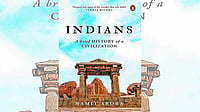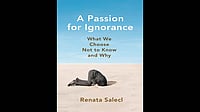In dispensing justice to a mason, Moti Ram, in 1978, whom the lower court had granted bail against a surety of Rs 10,000, to be realised within the same district, Justice Krishna Iyer of the Supreme Court had expressed shock at the manner of seeking such high surety from a poor man and reminded the errant magistrate that “our Constitution, enacted by ‘We the People of India’ is meant for the butcher, the baker, the candlestick maker—shall we add the bonded labourer and the pavement dweller”. It was a reference to a statement by Justice Vivian Bose in 1956 who, while expressing anguish at procedural delays in getting relief for a petitioner, had stated that the Constitution was not only for the benefits of the highly placed, but as much for the poor and humble.
These and many such cases not only project the glory of our Constitution but demonstrate how marginal citizens operating in an informal economy have continued to use constitutional provisions as an instrument to trigger public debates on the state’s obligation towards individual freedom and social justice. Created by an elite consensus, it is interesting how the Constitution and constitutional remedies have been sought by individuals on the margins who take recourse through the Supreme Court to produce an alternative narrative on citizenship. Whether the apex court, which upholds constitutional obligations of the state, has transformed to become the ‘Supreme Court of Indians’ is still open to interpretation.
In claiming that the constitutional provisions have indeed transformed everyday life in the country, A People’s Constitution argues that for a wide range of groups it acted as a powerful way to provide a check on executive powers in framing and claiming their legitimate rights. The book examines four important cases that set legal precedents: a Parsi journalist’s contestation of new alcohol prohibition laws; Marwari petty traders’ challenge to the system of commodity control; Muslim butchers’ petition against cow protection laws and sex workers’ plea to protect their right to practice prostitution. What emerges is not a story of simple resistance to state authority but a process of civic engagement with the state to reshape society and its economy.
Through the study of these landmark cases, Rohit De, who teaches history at Yale University, shows how a claim to cultural autonomy alongside a choice of economic activity had not only generated democratic behaviour but contributed to strengthening democracy too. That ordinary citizens have been in the forefront of rational legal battles with the state from the earlier days lays to rest the dominant assumption that judicial activism gained currency only in the 1980s. In effect, the legacy of forward-looking posture by the court had invoked touching faith and confidence amongst the underprivileged to seek the recourse of law for their rights. All said, the Supreme Court is still an elitist institution, not for the faint-hearted without adequate resources.
De’s insightful analysis leads the reader away from the judgment-driven narrative on ‘who won the case’ to a more nuanced understanding on the contingency and the contestation that make up the process of litigation. The anxieties of the legal process outside the court premises are at times more important than the actual outcome of the case. Despite the sex workers’ minimal success in the courts, the litigation succeeded in challenging the arbitrary powers of a local magistrate to evict any woman from the neighbourhood. Similarly, in the prohibition cases, expanded police powers came under judicial ire. The afterlife of a Supreme Court case is critical, not only as a legal precedent for lower courts but also for its impact on executive practices.
Despite incisive analysis, A People’s Constitution limits itself to a celebratory note and, as a consequence, omits addressing the structural shortcomings in the system. Although it is the constitutional mandate to keep the judiciary separate from the executive, in a majority of the states district magistrates are still drawn from the civil service. The book is silent on the SC’s failure to address this malaise, as also on the abysmal state of the lower judiciary. Till both these aspects are tackled upfront, full realisation of constitutional provisions will remain a work in progress. With constitutional consciousness growing among citizens, the judicial process needs to be made responsive to the everyday life of its people.
(Sudhirendar Sharma is an independent writer, researcher and academic)


























